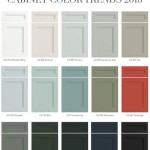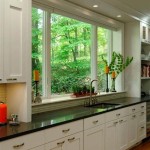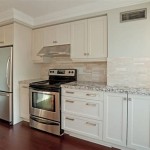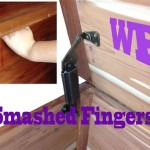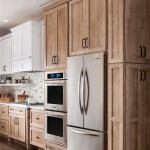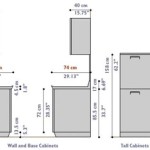Estimating Paint Requirements for Kitchen Cabinets
Painting kitchen cabinets represents a significant undertaking, often involving numerous steps, including cleaning, sanding, priming, and applying multiple coats of paint. Accurately determining the amount of paint needed before commencing the project is crucial not only for budgetary control but also for ensuring project continuity and achieving a consistent, professional finish. Running out of paint mid-project can lead to frustrating delays and potential color matching issues if the same batch number is unavailable.
Several factors influence the quantity of paint required. These include the size and number of cabinets, the existing cabinet finish, the type of paint selected, and the application method. A careful evaluation of these variables will allow for a more precise calculation of paint needs.
Calculating Surface Area
The foundational step in determining paint requirements involves calculating the total surface area of the cabinets to be painted. This requires a detailed inventory of all cabinet doors, drawer fronts, and exposed cabinet frames. Measure the length and width of each surface in inches, and then multiply these measurements to obtain the area in square inches. Sum the areas of all surfaces to arrive at the total surface area to be painted.
For cabinets with intricate designs, such as raised panels or detailed moldings, the surface area estimation requires more attention. While precisely measuring every contour is impractical, attempt to approximate the additional area contributed by these features. A reasonable approach is to add a percentage to the calculated flat surface area, typically ranging from 10% to 20%, depending on the complexity of the design. For instance, a cabinet door with substantial raised paneling would warrant a higher percentage increase than a door with minimal detailing.
It's important to note that both sides of the cabinet doors should be included in the surface area calculation if both sides are to be painted. Similarly, the interior surfaces of the cabinet frames should be considered if they are to be painted as well. Accurate surface area calculation is paramount for minimizing waste and ensuring adequate paint coverage.
Following the initial calculation, convert the total surface area from square inches to square feet by dividing by 144 (since there are 144 square inches in a square foot). This conversion is necessary because paint coverage rates are typically expressed in square feet per gallon.
Understanding Paint Coverage Rates
Once the total surface area has been calculated, the next step is to determine the paint's coverage rate. This rate is usually specified on the paint can or in the product's technical data sheet and is typically expressed in square feet per gallon. The coverage rate represents the approximate area a gallon of paint will cover with a single coat.
Several factors can influence the actual coverage achieved in practice. These include the porosity of the surface being painted, the application method employed, and the color and opacity of the paint. For example, a porous surface, such as unprimed wood, will absorb more paint, resulting in a lower coverage rate. Similarly, applying paint with a brush or roller may result in a different coverage rate compared to using a sprayer.
Darker paint colors and paints with lower opacity may require more coats to achieve adequate coverage, thereby reducing the effective coverage rate per coat. It is generally advisable to slightly overestimate the amount of paint needed, particularly when using darker colors or painting over a significantly different existing color. This will help to avoid the need to purchase additional paint mid-project and minimize the risk of color matching issues.
Consider the number of coats required for the desired finish. Most cabinet painting projects require at least two coats of paint, and sometimes even three, especially when using lighter colors over darker surfaces or when aiming for a high-gloss finish. Multiply the total surface area by the number of coats to determine the total surface area to be covered across all coats.
Accounting for Priming and Waste
Priming plays a crucial role in achieving a durable and professional paint finish on kitchen cabinets. Primer not only improves paint adhesion but also seals the surface, reducing paint absorption and ensuring a uniform appearance. When estimating paint needs, it's essential to account for the amount of primer required.
The coverage rate for primer is typically similar to that of paint, but it can vary depending on the type of primer and the porosity of the surface. As with paint, consult the primer can or technical data sheet for the specified coverage rate. Calculate the amount of primer needed based on the total surface area to be primed, considering that most surfaces require only one coat of primer.
Furthermore, it is prudent to factor in a margin for waste. Some paint will inevitably be lost during the painting process due to spills, brush or roller loading, and cleanup. A general rule of thumb is to add 10% to 15% to the calculated paint requirements to account for waste. This buffer will help prevent running short on paint and ensure a consistent finish throughout the project.
After painting, some paint will remain in the can. Proper storage of leftover paint is essential for future touch-ups or small projects. Store the paint in a cool, dry place, tightly sealed to prevent drying or spoilage. Label the can clearly with the date and project name for easy identification.
Finally, consider purchasing paint from the same batch. This ensures consistent color and sheen across all cans. If purchasing additional paint later, it is essential to check the batch number to avoid color variations. Color variations, even subtle ones, can be noticeable on large surfaces like kitchen cabinets, impacting the overall aesthetic appeal.
The application method also plays a crucial role in paint consumption. Spraying paint typically requires more paint than brushing or rolling due to overspray. If using a sprayer, consider increasing the estimated paint quantity by an additional 10% to 20% to compensate for this. The nozzle size and spray pressure will also affect paint consumption.
The type of paint selected also affects the amount needed. For example, higher-quality paints often have better hiding power and coverage rates. This means that fewer coats may be required, ultimately reducing the total amount of paint needed. While higher-quality paints may have a higher initial cost, they can save time and money in the long run by providing better coverage and durability.
When painting cabinets, the edges and corners often require more attention and paint to achieve adequate coverage. Be sure to apply paint generously to these areas, as they are prone to wear and tear. This may also slightly increase the overall paint consumption.
Consider the sheen of the paint. Different sheens have different coverage properties. For example, matte finishes tend to absorb more light and may require more coats to achieve a uniform appearance compared to glossier finishes. High-gloss paints, on the other hand, may highlight imperfections in the surface, requiring more thorough surface preparation and potentially more coats to achieve a smooth finish.
Ultimately, accurately estimating paint requirements for kitchen cabinets involves a combination of careful measurement, knowledge of paint coverage rates, and consideration of various influencing factors. By taking the time to assess these variables, one can minimize waste, avoid delays, and achieve a professional-looking paint finish that enhances the beauty and functionality of the kitchen.
Proper ventilation is crucial during the painting process, especially when using oil-based paints or primers. Insufficient ventilation can lead to the buildup of harmful fumes and create a health hazard. Ensure adequate airflow by opening windows and doors or using a fan to circulate the air.
Safety precautions should always be observed when working with paint. Wear appropriate personal protective equipment, such as gloves, a respirator, and eye protection, to minimize exposure to chemicals and fumes. Follow the manufacturer's instructions for safe handling and disposal of paint and related materials.
Thorough surface preparation is essential for achieving a durable and long-lasting paint finish. This includes cleaning the cabinets to remove dirt, grease, and grime, sanding to create a smooth surface for paint adhesion, and repairing any damages or imperfections. Proper surface preparation will not only improve the appearance of the painted cabinets but also extend their lifespan.

How To Paint Kitchen Cabinets In 7 Simple Steps

How To Paint Kitchen Cabinets In 7 Simple Steps

How Much Time Will It Take To Paint My Kitchen Cabinets Favorite Painters

How To Paint Kitchen Cabinets A Step By Guide Confessions Of Serial Do It Yourselfer

The Complete List Of Supplies Needed To Paint Cabinets

How To Paint Kitchen Cabinets

Avoid These Mistakes How To Paint Cabinets That Are Already Painted Grace In My Space

A Step By Guide To Painting Kitchen Cabinets With Kilz Primer Blog

How To Paint Kitchen Cabinets Best Color Ideas Cost

Painted Kitchen Cabinets One Year Later The Palette Muse
Related Posts

